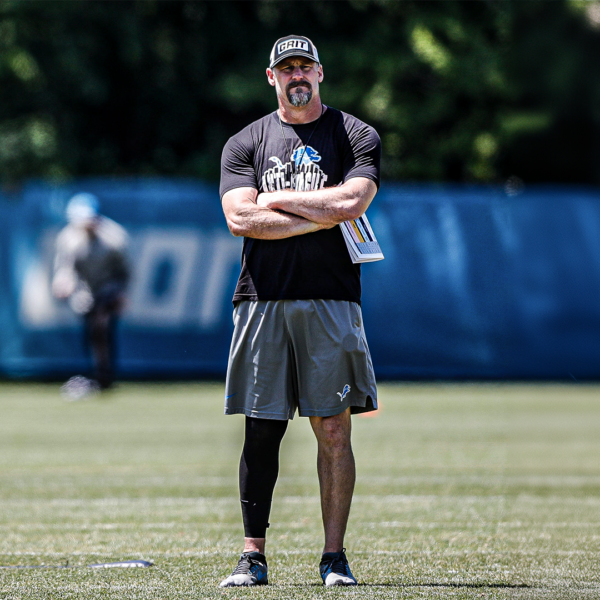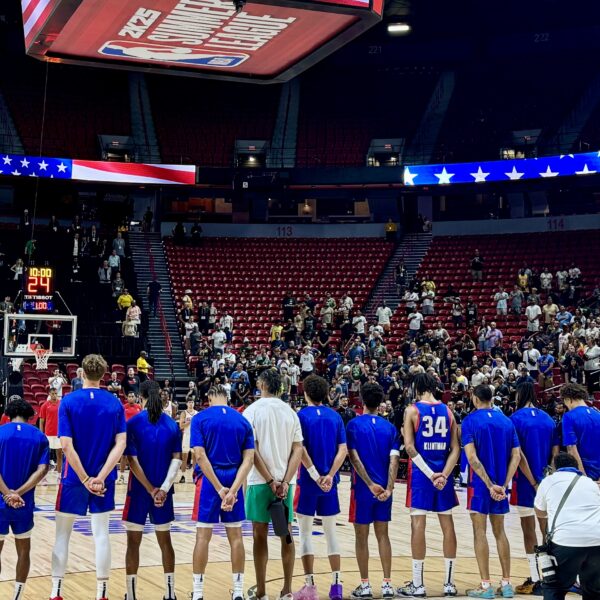SPOILER WARNING!
There are spoilers abound in this article! If you have yet to play God of War (2018) and would like to experience the twists and turns yourself, avoid scrolling! Once you move beyond the second paragraph, the spoilers strike!
Norse Mythology is a popular source of inspiration for many forms of media adaptations. This includes the Marvel Cinematic Universe’s “Thor” franchise, “The Mask,” “The Almighty Johnsons,” and the bleak horror film “The Ritual.” Even “Lord of the Rings” borrows deeply from Norse Mythology in too many ways to list here. Fantastic elements of the Aesir, Vanir, Jötnar, and other mythical creatures have powered our imaginations, whether we have known it or not. 2018’s revival of God of War followed this trend, giving us an inexact but entirely fun chronicle of my favorite pantheon.
Unfortunately, a new world and a new cast meant they would meet one of the most prolific God-Killers: Kratos. For all its popularity, the Gods of Greek Mythology couldn’t maintain their dominance after provoking Kratos. He and his son venture to the highest peak in the Nine Realms to scatter his wife’s ashes. It’s only fitting that the Norse Gods stand in his path, drawing Kratos’ ire. Ragnarok might as well have started the moment they crossed him.
My perception changed the moment that son, Atreus, was revealed to be Loki.
Three Tribes of Norse Mythology
| The Aesir | The Aesir (pronounced “ICE-ir”, singular: Ás) are one of the main groups in Norse Mythology. They are descended from Borr. Hailing from Asgard, their leader is the All-Father, Odin. Given the role of self-appointed guardians of mankind in mythology, they are generally pictured as entities of war. Within them are our only hope of keeping Ragnarok at bay, though they ultimately fail. Aesir also functions as an adopted title. Beings from all three tribes have been welcomed into their ranks; This denotes them as Aesir, as well. It’s unique to them, as the Vanir and Jotnar titles are not shared. |
| The Vanir | The Vanir (pronounced “VAN-ir”) are deities who dwell in Vanaheim. It’s believed ancient peoples attributed health, fertility, and wisdom to their kind in some sources. They’re not truly distinct from the Aesir and not much is known about them. It’s from one of their most important members, Freya/Frigg, that Odin learns Seidr – the power of precognition. After the Aesir-Vanir war, many of the Vanir join Odin’s tribe and vacate Vanaheim as an exchange of hostages. |
| The Jotnar | The Jotnar (singular: Jotunn, pronounced “YO-tun”) are the first living beings in the Universe. Antagonistic by design, they want to pull the Universe back into the silent darkness. Their role in Ragnarok is defined plenty, but many of them have married Aesir. Jotunheim is their domain. Forces of nature were difficult to brave, so Jotnar represented destructive chaos and entropy. |
The last of the Jotnar: Atreus
Atreus is Kratos and Faye’s son and possesses Mortal, Olympian, and Jotunn blood. Although his godhood is hidden from him for most of the game, our prior knowledge of the Ghost of Sparta reminds us that Zeus is also the boy’s Grandfather. That accounts for his Olympian blood, but what about that of the Jotunn?
A Mother’s Touch
“Faye” is nothing but an epithet – His Mother’s real name is Laufey, and she is a Jotunn. In English, we’d call them giants, but don’t attribute that to their appearance. They are some of the most bizarre creatures in Norse Mythology, in my opinion, starting with the discrepancy in sizes. Some Jotnar appear no larger than humans, while others may be mountainous in their stature. Many among them aren’t strictly humanoid, some holding the full shape of animals.
Laufey sounds extraordinary. She was the last guardian of the Jotnar and planted herself firmly in Midgard. Brok and Sindri, Dwarves, fashioned the Leviathan Axe to combat the Gods – Thor was murdering her kind in a rage to wipe them off the face of Midgard. She took it upon herself to free the enslaved, feed the starving, and thwart the Gods’ agenda when she could. However, she put down her arms and instead chose a domestic life with Kratos and eventually gave birth to Atreus.
Thanks to Laufey’s demeanor, Atreus’ disposition is in complete contrast with his Father, to begin with. He’s a child; therefore, we’re shown his naivety, as well as a strong sense of compassion toward wildlife. At times, he’s an egocentric little brat who could surely use more of Kratos’ discipline. Not that the former God of War was always composed. He took great strides in gaining self-restraint, and that’s something Atreus will need going forward.
Potential Power – The God of War and Mischief
He holds unbridled power, as shown by his failed execution of Spartan Rage. Following in the footsteps of his Father, unleashing this ability once he can sustain it will prove both advantageous and detrimental. Kratos has performed great feats fueled by his rage, but the rage itself has blinded him throughout his journey. Atreus will need guidance.
When his Jotunn blood inevitably contributes to his power, he’ll also gain the ability of precognition and quite possibly shapeshifting. His increased durability, strength, and speed may come from not just the Jotnar but his relation to the Greek pantheon.
His very existence is precarious, and many of us have wondered who he poses the greatest threat to. I’d assume the Aesir, but thanks to a mural depicting Kratos’ death, with Atreus lingering over him, the answer may not be so simple.
“That was your father in Hel… Is this what it is to be a god? Is this how it always ends? Sons killing their mothers… their fathers?”
Atreus, to Kratos.
What’s all the fuss about Loki?
Loki (Lopt, Loptr, Loke, among other names) holds an interesting spot in mythology as both friend and foe. His dual nature as both a member of the Aesir and their lifelong enemies, the Jotnar, leaves many scholars with questions. Then again, no piece of Norse Mythology seems fluid, so they may never find answers. Despite the Poetic Edda and the Prose Edda, there’s speculation that no Norse God was worshiped the same way between individuals. According to scholars, there’s a lack of evidence that Loki was ever worshiped or reviled.
Loki Laufeyjarson
His parents in mythology are Farbauti and Laufey. Unlike God of War, where we learn Farbauti is what Laufey called Kratos, Laufey’s identity is quite ambiguous. She’s said to be a Jotunn in God of War, but the Eddas are less clear, leaving it up to interpretation. My favorite idea is that Laufey was, in fact, Aesir. Aesir and Jotnar have mated plenty. These unions were not forbidden despite the two races being sworn enemies, and Laufey being part of the Aesir could explain exactly why Loki lives among them.
Another difference between Atreus and Loki lies in the timeline of both sources. There are events Mimir speaks about throughout the game that, if following the source, would have directly involved Loki. Therefore, throughout the story, I kept asking, “Where the Hel is Loki?!” I couldn’t believe he hadn’t revealed himself to take advantage of Kratos’ bloodshed!
The Children of Loki
Much cause for fear toward Loki originates from his progeny, as well. Loki’s antics may escalate to villainous proportions, but the Trickster is often overshadowed in that department by his children. With the Jotunn Angrboda, he sired Fenrir, Jormungandr, and Hel.
The Eldest – The Fenrir Wolf
Fenrir is the oldest of Loki and Angrboda’s children and particularly frightens Odin due to his part in Ragnarok. Odin discovered he is fated to be devoured by Fenrir during Ragnarok. The Aesir wanted to prevent this, and so they raised him for the sake of controlling the beast. Outgrowing them, his jaws capable of rending by the ground and the sky, the Aesir fooled the wolf. Calling it a game, the Gods bound Fenrir twice.
He thought it was a test of strength, one that he passed both times effortlessly. Seeing that their previous fetters were no use, the Aesir had the Dwarves forge the next binds. No one can say Fenrir walked into that trap, though. He grew suspicious of the other attempts to bind him and bargained; Fenrir would only allow himself to be restrained if one of the Gods placed their hand in his mouth. Tyr lost his hand that day, but the beast was bound.
Worse, after they chained him to a boulder, they wedged a sword between his jaws to hold them open when he tried to eat them for their betrayal.
The Midgard Serpent – Jormungandr
Thor has two encounters with Jormungandr before Ragnarok, in the Eddas. This being is so large that its body stretches the entire length of the world, grasping its own tail. In their final battle, the two enemies will slay one another, with Thor succumbing to the serpent’s deadly poison.
Jormungandr is apparently a child during the events of God of War – He fought with Thor and was struck hard enough that he was flung back through time. It’s believed this younger serpent already witnessed much of Ragnarok and will grow older and larger to kill Thor inevitably. I’m not sure why they had to get timey-wimey with a Norse tale, but I suppose it’s interesting plot development.
What’s most intriguing is that he recognizes Atreus in the game. Once I started thinking Atreus could very well meet Angrboda and create Jormungandr, time-travel was no longer an issue. He could simply be helping Kratos and Atreus because of their position against the Gods; I’m more willing to believe the serpent is excited to help dear ol’ Dad take down the Aesir.
Hel
Not Cate Blanchett’s Hela from Thor Ragnarok, but Hel was the inspiration. The Marvel Cinematic Universe took liberties with her, depicting her as Odin’s Daughter. Marvel comics retconned Hela time and time again, noting her as Loki’s Daughter one moment, and completely unrelated in another. What’s important is this:
Hel is the daughter of Loki in Norse mythology.
She is the Goddess of Death, presiding over Niflheim, where she will gain a portion of the dead split between Frigg, Odin, and herself. Her appearance varies, with only three depictions I’ve read in the Eddas: Half blue and half flesh-colored, one half of her body pearl white, the other obsidian black, and one where half of her body is a corpse while the other side is a beautiful, living maiden. As we can see in the artwork, Hel is sometimes thought to be a hideous Goddess.
Her domain is also named Hel, and Odin appointed her. I’ve said before that I was surprised by his generosity. It seems like another method of separating Loki’s children because of prophecy, but I haven’t read anything about the two antagonizing one another. In fact, the Voluspa and Gylfaginning state that the people of Hel arrived with Loki during Ragnarok. There’s no mention of her physically being there, nor of her death after the battle. It’s important to keep in mind that she does provide Loki an army and a ship made of discarded nails.
The Gift-Horse – Sleipnir
So, let’s jump right into this one by starting with this startling fact: Loki is Sleipnir’s Mother. Once upon a time, Loki took the form of a mare and mated with a stallion named Svathlifari. This resulted in the birth of Sleipnir, an eight-legged steed. He is well-known as the horse Odin rides throughout his travels in the Nine Realms. Perhaps Odin should have taken note and treated Loki’s other children like his prized horse?
Narfi and Vali
Narfi and Vali are the sons of Loki and Sigyn, and their fate it arguably the worst. Vali is turned into a wolf and disembowels Narfi. Afterward, the Gods use Narfi’s entrails for a gruesome punishment. More on that later.
Loyalty vs. Self-Preservation
What good is loyalty to Loki? He’s been known to help the Gods and the Giants, so long as the outcome benefits him. Whether it’s a moment of instant gratification or a scheme for the long game, Loki is a trickster and is portrayed as having malicious glee about it all. By no means does this make the oddity evil. In fact, “Good and evil” were lesser-known ideals. Loki just was, and what he was could be detrimental to anyone at any moment.
Once Ragnarok comes, Loki will cut ties with the Gods and instead side with the Jötnar. Ultimately, they want to ensure the cosmos is destroyed. While that screams, “LOKI IS EVIL,” it’s all circumstantial and reactionary. I’ll give you some details of the peculiar Norse creation myth to explain why.
Ymir and Creation
Ymir is the first of the Jotnar created as Muspelheim and Nifleim – lands of fire and ice – collided within the gaping abyss called Ginnungagap. To simply it, fire and ice met and mingled in darkness, and the ice melted. Those drops created Ymir. From Ymir’s sweat, armpits, and legs came more Jotnar. Throw in a cow named Audhumla that emerged from the melting ice and nourished Ymir with her milk. Said cow kept licking the ice for sustenance and uncovered Buri, the first of the Aesir. Still with me?
Buri fathered a son, that son married a giantess named Bolthorn, and the two had Odin, Vili and Ve. At some point, the three decided to set out constructing the world! Killing and dismembering Ymir to use his corpse to dress the whole of creation was their great idea. Odin and the Aesir see the Jotnar as enemies because they want to return to the world’s state to that silent darkness.
This is certainly a tale Loki would not scoff at, and it isn’t the first and only time Odin took advantage of the Jotnar.
The Binding of Loki
Each poem I’ve read about Loki painted the picture of a society that wouldn’t turn their backs on one of their own. Loki had merit, helping the Aesir nearly as much as he set them back. There was one event that couldn’t be rectified by a good deed, and that’s the orchestrating of Baldur’s death in Norse Mythology.
Prior to the game’s events, Freya has a vision of Baldur’s death and seeks to prevent it. Letting the fear of losing him drive her, she casts a spell granting him invulnerability. Unfortunately, the byproduct of this invulnerability is an inability to feel anything. Pain, pleasure, taste – these things are unknown to Baldur for the remainder of his life, causing him to resent her. He wanted to kill her, but at the time, strangling her to death wasn’t on his list of plausible actions until later.
God of War diverts from the source material. Baldur is a redeemable figure, celebrated by Gods and other beings. None of that is present in the game. His Mother Frigg (Another name for Freya, but that’s a whole different rabbit hole to go down) had a vision of Baldur’s death. Instead of casting a spell, she made every object on Earth take an oath not to harm him. However, she thought mistletoe too insignificant, so she didn’t bother asking of it an oath.
Different Strokes for Different Lokes
In God of War, Atreus shoots Baldur with mistletoe, breaking his spell of immunity. Kratos snaps the God’s neck not long after. It’s fun to watch, but boring in comparison to what the mythology’s entity does.
Disguising himself, Loki casually asks Frigg what could harm Baldur. She answers him without a second thought, so what does Loki do? He immediately goes to secure enough mistletoe to craft a dart so he can join in on a game. What game? Throwing projectiles at Baldur for entertainment because he couldn’t be touched.
Loki, in all his earnestness, decides to offer his newly forged dart to Hod. Hod, taking aim, strikes Baldur in the chest, killing him on impact. Odin sends a God to plead for Baldur’s return from Hel, and her terms were that every being alive or dead must weep for him first. Leave it to Loki to disguise himself again and not shed a single tear.
The Horrid Details
His punishment for this tragedy is told with different details, depending on the writer. Horrifying as it is, the most memorable occurs when he is hunted and tied to three rocks using the entrails of his own children. There’s also a serpent tied above his head, continuously dripping acidic venom onto his face. Sigyn, Loki’s wife, occasionally offers a reprieve. The artwork usually depicts her holding a bowl over his head to catch the venom, but she must lower the bowl after a time.
If Baldur’s death brought such severe punishment in the Eddas, what price the Gods will attempt to extract in the game?

God of War: Ragnarok
The Gods are already setting up their own worst enemy in Atreus. At least in the mythology, Loki lived among their ranks and his disposition was both known and tolerated until he caused the death of Baldur. Experiencing such a ruthless punishment pushed the Trickster to instead become an instrument of their demise.
Baldur was sent by Odin to apprehend Atreus’ Mother, and the carnage that ensued during their innocent quest to spread Laufey’s ashes in Jotunheim is because of the Aesir. Likewise, Modi and Magni – the sons of Thor – are cruel in their hunt for Kratos and Atreus. Specifically, Modi finds it amusing to belittle Laufey in front of the boy, which eventually causes him to murder the Aesir.
After Kratos and Atreus killed Baldur, their friendship with Freya dissolved. Sure, they were trying to save her from being strangled to death by her own Son, but Gods are hardly reasonable. So now, the woman he grew to respect will be an enemy, seeking vengeance for an act that saved her life. As a young man, he must confused and hurt by this. Fittingly, he could turn his displeasure on the Gods when he’s come into his power.
In Conclusion
Atreus is a dangerous version of Loki in the making, with a yet untapped rage like his Father’s. There’s also a host of Jotnar abilities beyond precognition that he’s sure to utilize. Should the Aesir succeed in killing Kratos, God of War could take Atreus down a destructive path the likes of Kratos has yet to see. He may even embody the fall of the Gods himself.
Ragnarok is coming.
References
If you’d like to learn more about Norse Mythology in general, here are a few sources I started with:
- Any version of the Prose Edda by Snorri Sturluson.
- “The Poetic Edda” translated by Carolyne Larrington.
- Dr. Jackson Crawford has a Ph.D. in Scandinavian Studies. Visit his site and his YouTube channel. While not a poetic translation, he really taught me a lot about the material. He’s responsible for what limited understanding I have of runes.
- Daniel McCoy. I haven’t read his books (I plan to), but I’ve scoured his website for years.
- Neil Gaiman’s book “Norse Mythology”.
In your pursuit, you’ll find many authors and may favor one over the other. Whoever you choose, have fun!















